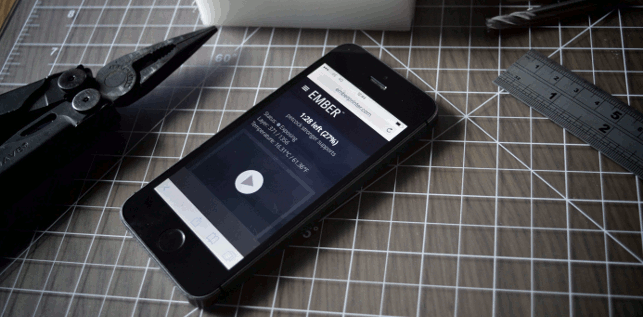With a move to a new office, Al Dean is spending a little time looking at the equipment that he takes for granted. What’s proving useful, what’s not and why it is that we become attached to outmoded ways of working
Regular readers will know that for the last few years, I’ve been working out of a small workshop in the back of my garden.
While it’s been fun, the simple facts are that a 12 x 6 wooden building isn’t cutting it any more. Along with all the usual ephemera we collect over the years, the recent months have seen the hardware we have access to expand somewhat.
With the delivery of one of the first Autodesk Ember 3D printers in the UK and soon a 1m x 1m 3 axis CNC router and a new 3D filament based printer later on in the year, it’s clear that something bigger is needed. So move I must.

Assuming that you’ve uploaded the data, you can kick off a print job to Autodesk’s Ember printer, monitor it’s progress all from a web browser. It’ll connect to your office or workshop hard wired network or your wireless in a snap. That’s a remarkable shift
The good news is that it has given me a chance to sort through, what probably amounts to 15 years worth of collected stuff.
While I’m not a big one for keeping paper work anymore (I’ve already documented a solution to that), there’s a whole tonne of books, manuals and devices that have come and gone.
I think I have one of every SpaceMouse model since its inception and some others from now defunct vendors. And cables. A billion cables.
I’m also trying to learn a little more about the world of electronics — it’s something that has always escaped me, but I’m digging into what can be done with today’s accessible, modular and hacked hardware.
So, I need somewhere where I can stare blankly at an Arduino or a breadboard till something starts to stick.
The good news is that I’ve found the perfect spot. A quiet 200 sq ft office above a local garage. The landlords also don’t mind me tinkering with near industrial machinery, light curable resins and all manner of other stuff — something that might be rather difficult in a normal office block.
But during one of the hours of clearing out and boxing up, I found myself pondering how the computing world has changed.
It was once the case that if you want to do some serious digital design work, you had to get into the office, fire up 20 grand’s worth of hardware and sit there staring at a 21” cathode ray tube monitor to get it done.
Contrast that to today. We’re now spoilt with all manner of mobility enabling tools and devices. Yes, the workstation is still a big part of it, but they’re complimented with laptops that can have similar horse power.
We have smart phones and iPads or Surface Pros ever present in our bags or pockets. And of course, mobile high-speed data connections to back them up.

The next addition to the DEVELOP3D Workshop — the X-Carve — a 1m x 1m CNC Router from Inventables.com
What’s interesting is that the tools we want to use are finally starting to catch up with these advances.
We’re now seeing systems that can run in the browser or through specialised apps.
We have the ability to centralise our data, to ensure that we have access to all of that mission critical data whenever we need it, wherever we need it.
So, will I be abandoning the hoarding genes and running clean and lean in the new office? Chances are, not so much.
I’ll still be taking all those reference manuals and engineering text books with me. I’ll also probably maintain “Al’s Museum of 3D control devices” on a bookshelf somewhere and I’ll certainly be keeping all those experimental things I’ve built over the years.
That said, I’ll be sorting the wheat from the chaff, and be taking a few trips up to the recycling centre, the local RSPCA shop and donating a few things to local schools to help them out. But it’ll be a much tighter, leaner ship than before. Remind me of that in 12 month’s time.
Why we become attached to outmoded ways of working
Default






